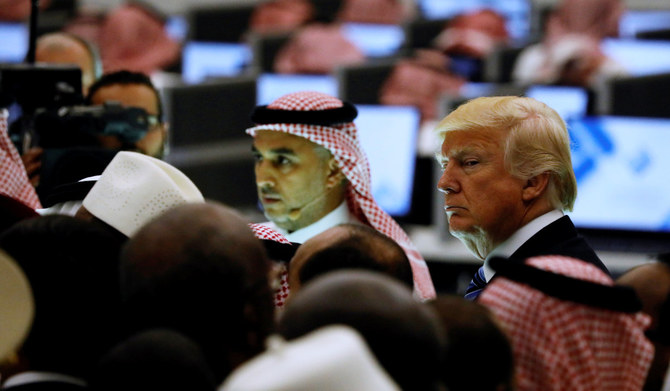
The 2022 Saudi budget will soon be released and there will undoubtedly be many commentators analyzing the positive fiscal position of the country, given the quarterly trends registered over the past year.
What many may overlook are the significant steps that evolved over time in the budgeting process to arrive where we are today, as this mirrors some of the fundamental pace of reforms that the Kingdom has witnessed. Ensuring a more transparent and timely budgeting process that is a guidepost to domestic and international businessmen and citizens is of paramount importance, and also a critical process for a positive sovereign country rating.
Every country has its own system in formulating and announcing its budgets. The current Saudi budgetary system has little resemblance to the one used a few years ago when the budget announcement was an annual event read out monotonously on state television in a robotic fashion, mostly composed of minute royal decrees read out in full setting out the next year’s budget allocation for different spending entities.
Excitement generated from these bland statements was from the concerned entities that waited to see whether there was an increase or decrease in their budgetary allocations. There was little discussion on why deviations occurred in overspending or under spending, oil price trends’ assessments, detailed breakdowns in non-oil revenues or government plans in borrowing domestically or internationally.
Worst of all, the annual exercise used to take place on the first day of Rajab in the Hijri calendar since 1932 when the Kingdom was established, and one had to wait until the following Rajab to find out next year’s budgetary changes and allocations. Another feature of the old budgetary system was that the Ministry of Finance required all entities that received state budgets to return any unused spending leading to a sharp rise to disburse these unspent funds in a short period of time, possibly leading to inefficient spending and potential corrupt practices in contract allocation.
As businessmen recognize from their own budgetary and financial cycle planning, a one-year assessment is not an effective tool, especially when external factors affect fiscal balances. Given the importance of oil revenues to the Saudi budget forecast, any volatility in oil prices considerably affect such annual budget forecasts. Doing the budget on an annual basis defeated the whole premise that the budget was a viable tool to assist businessmen obtain a clearer picture on the state of the economy and act accordingly in their investment decision, let alone foreign investors and rating agencies.
The old budgetary system was also marked by a lack of close coordination between different government ministries with a seeming reluctance or inability to share real-time data with the Ministry of Finance except to advise the ministry of their forecasted expenditures for the next fiscal year. In a system which understandably gave a higher element pecking order of importance to government entities that received higher budgetary allocations, there was little incentive for these ministries or entities to reduce their fiscal needs due to potential efficiencies and cost reduction programs, and the Ministry of Finance could not impose these on them, except to query significant budgetary increase requests. While the Ministry of Finance released the annual budget statements, the Ministry of Economy and Planning as it was then known, also had an important forecasting role to play and this created some confusion and overlap on which ministry led the whole process.
Gradually changes have taken place to reach where we are today, especially in the new era of economic and administrative reforms launched by Crown Prince Mohammed bin Salman with the launch of Vision 2030 and closer inter ministry coordination and reporting. The first change introduced in October 2016 was to make the annual budgetary process coincide with the Gregorian Year, from first January to end of December, given that many Saudi companies applied this accounting timeframe as well as the foreign companies operating in the Kingdom. With an increased focus on attracting foreign direct investment to the Kingdom, aligning the annual Saudi budget to the new Gregorian calendar was a logical and welcome exercise compared to the earlier Hijri Rajab calendar, which changed every year as it was based on the lunar cycle. One consequence of the change was that Saudi civil servants lost 11 days of salary payments as the Gregorian calendar was longer, with a welcome fiscal saving going to the treasury, especially as the period coincided with volatile and low oil prices and sharp drawdowns in Saudi reserves.
The most important budgetary change however was the introduction of more frequent budget updates on a quarterly basis, with an abundance of information in actual versus budget variances, and forecasts of key economic assumptions such as value-added tax and sovereign borrowing as well as assessments of domestic and global economic conditions. Budgetary breakdowns were provided with explanatory footnotes to make the comparisons easier. This was warmly welcomed by all those interested in assessing the state of health of the Saudi economy and a far cry from the days when businessmen, let alone analysts and researchers like this author, went on fruitless missions trying to obtain interim data from the Ministries concerned.
More transparency has now become the keyword, and this could only happen due to a coordinated ministerial effort to ensure that the Ministry of Finance obtained timely data from government agencies and became the focal point for Saudi budgetary oversight. This was helped by a new cadre of talented Ministry of Finance employees who also learned from their peers on modern budgeting methods and comfortably presented the Saudi fiscal situation to international organizations like the International Monetary Fund and World Bank, and rating agencies, and in the specialized committees during the recent Riyadh 2020 G20 Summit. The establishment of specialized ministry units like the Debt Management Office only added to the professional changes taking place as the level of both domestic and international debt issuance has increased in both maturity, tenors and variety — sukuks, conventional and green bonds — compared to the old budgetary system.
More budgetary process reforms should not be ruled out, especially decentralizing budgetary allocation expenditures on a regional basis depending on agreed population and economic assessment needs for each region. This will democratize the budgetary process and ensure greater accountability in managing the allocated financial resources more efficiently by those in the different regions, since presumably they know the needs of their region better than anyone else. Many governments apply a mixture of national or federal budgeting allocations as well as local or state budgets, with some local bodies even setting up their own taxation rates to attract investments. Who knows but maybe one day the different Saudi regional budgetary entities could also do the same?
In summary, for seasoned budget watchers awaiting the next set of budget data for 2022, they must not forget the significant changes that have occurred since Crown Prince Mohammed bin Salman started his overarching reforms to reach where we are today.
• Dr. Mohamed Ramady is a former senior banker and professor of finance and economics, King Fahd University of Petroleum and Minerals, Dhahran.
Disclaimer: Views expressed by writers in this section are their own and do not necessarily reflect Arab News" point-of-view












